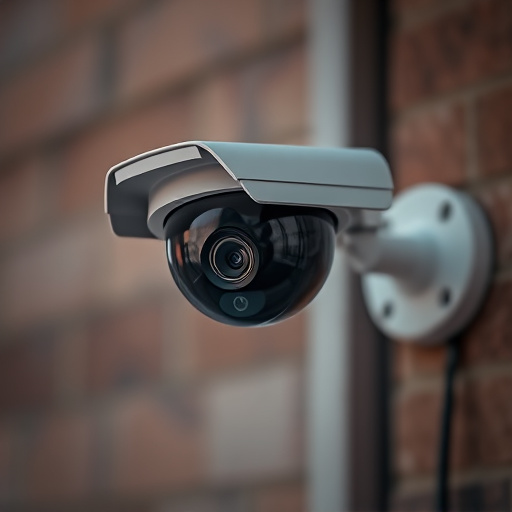Understanding criminal behavior, security experts employ fake camera dome design ideas as a powerful deterrent. These realistic-looking cameras, ranging from simple plastic domes to LED-lit models, blend seamlessly into environments without revealing actual monitoring systems. Strategically placing them near windows or well-lit areas creates an illusion of enhanced security, encouraging responsible behavior and providing peace of mind. However, the use of these decoys raises ethical concerns regarding public safety versus privacy rights, necessitating compliance with local laws and regulations to avoid legal issues.
In today’s digital era, enhancing security has become paramount. One innovative strategy gaining traction is the strategic placement of fake security cameras, known as dummy or decoy cameras. This article explores the art of creating an effective fake camera dome design, delving into the psychology behind its placement and key factors for maximum deception. From various dome styles to ethical considerations, we provide valuable insights, including practical tips on Fake Camera Dome Design Ideas, to help you navigate this modern security solution.
- Understanding the Psychology Behind Fake Camera Placement
- Types of Fake Camera Dome Design Ideas
- Key Factors to Consider for Effective Deception
- Ethical Considerations and Legal Implications
Understanding the Psychology Behind Fake Camera Placement
Understanding the psychology behind fake camera placement is key to an effective security strategy. Criminals often look for easy targets, and visible security measures can deter them. Placement should be strategic, mimicking real surveillance systems while maintaining an air of realism. The use of fake camera dome design ideas, for instance, can provide a subtle yet powerful deterrent without revealing the actual monitoring system’s location.
By placing these realistic-looking cameras in strategic locations, businesses and homes can create the illusion of enhanced security. This psychological factor plays a significant role in crime prevention, as potential intruders are less likely to attempt actions if they believe they are being watched. Effective use of fake camera design encourages responsible behavior while offering peace of mind.
Types of Fake Camera Dome Design Ideas
When it comes to fake camera dome design ideas, there’s a world of possibilities to create convincing decoys. These designs range from simple, realistic imitations that mimic the look and feel of actual cameras to more intricate models that incorporate LED lights for a dynamic effect. Some creative options include:
1. Realistic Plastic Domes: These are among the most common types, featuring plastic casings that closely resemble genuine camera lenses. They can be painted to match various brands and models, making them nearly indistinguishable from real security cameras.
2. LED-Lit Domes: Incorporating small LED lights within the dome allows for a convincing simulation of a camera’s infrared or night vision capabilities. These can be programmed to blink or stay steady, adding an extra layer of realism.
3. Weatherproof Options: For outdoor applications, weatherproof fake camera domes are available. Crafted from durable materials like plastic or metal, these units can withstand varying weather conditions, ensuring they remain functional and effective deterrents.
Key Factors to Consider for Effective Deception
When planning a fake security camera placement strategy, several key factors must be considered to ensure maximum deception and effectiveness. One of the most important aspects is choosing the right fake camera dome design ideas. Realistic replicas that mimic genuine security cameras are crucial; these fakes should have detailed features like lenses, LED indicators, and even moving parts to make them appear functional. Placement is equally vital; positioning decoys in strategic locations can deter potential thieves or vandals, as they’ll never be sure if a camera is actually watching.
Additional considerations include the environment’s lighting and visibility. Fake cameras should blend seamlessly into their surroundings, so placement near windows or well-lit areas is ideal. Moreover, consider the camera’s field of view; placing decoys at intersections or blind spots can provide comprehensive coverage. Regular maintenance is also essential to keep these fake security cameras looking realistic, ensuring they continue to serve as an effective deterrent.
Ethical Considerations and Legal Implications
The ethical considerations surrounding fake security camera placement are complex and multifaceted. While these devices can serve as a deterrent to potential criminals, their use raises questions about privacy rights and public trust. Positioning fake cameras strategically, such as using innovative Fake Camera Dome Design Ideas, can create an illusion of enhanced surveillance, but it’s essential to ensure these tactics do not infringe upon individuals’ reasonable expectations of privacy. Balancing security needs with the right to privacy is crucial to maintaining a harmonious society.
Legally, the implications of deploying fake security cameras vary depending on jurisdiction. In many places, public spaces have limited privacy protections, making certain placements acceptable. However, residential areas or locations where individuals expect privacy, like backyards or bedrooms, may be protected under different legal frameworks. It’s imperative for property owners and businesses to understand local laws and regulations regarding surveillance technology, including fake cameras. Non-compliance can lead to significant legal repercussions and damage to one’s reputation.
In conclusion, while fake security camera placement strategies offer a unique approach to deterring crime, it’s essential to balance deception with ethical considerations. By understanding the psychological impact and selecting the right Fake Camera Dome Design Ideas, property owners can create an effective deterrent without misleading or causing harm. Always remember to adhere to legal implications and use these tactics responsibly to enhance overall security.
